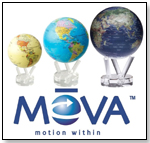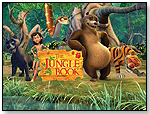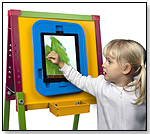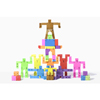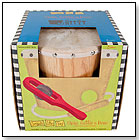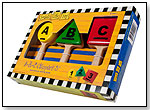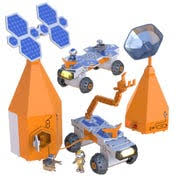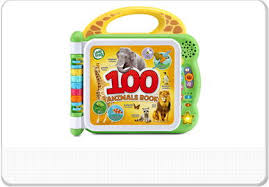|
|
Children Sad That Parents Won't Sit Down and Play Developmental Toys that Help Parents & Kids BondMany children have told us that it makes them sad when their parents don't really sit down to play with them. Unfortunately, though parents want to get to know their children better, they mostly feel so overwhelmed by work and adult life that many of them keep postponing such crucial bonding. Luckily, our survey of 12 parents made it clear that putting down the cell phone and picking up a toy is a very simple and effective way to bring parent and child closer. How can it help? To see TDmonthly's recommended toys scroll to the end of the article or click here.
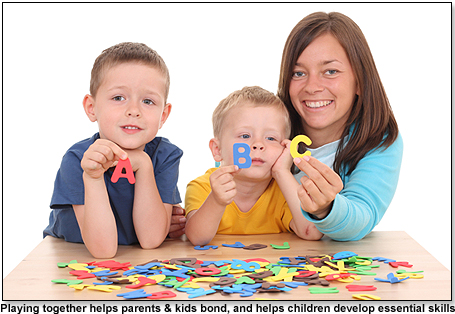 According to an article by Gabriel Guyton in the September 2011 issue of Young Children, "Play is the mechanism by which children learn—how they experience their world, practice new skills, and internalize new ideas—and is therefore the essential 'work of children'." And if play is the work of children, then toys are surely the tools of their trade! Play and Child Development Playtime, and therefore any toy a child engages with during playtime, affects the brain. Years of research have shown that experience creates structure in the developing brain. Specific types of experiences stimulate various areas of the brain, which, in turn correspond to both physical and mental activities. Research supports the idea that interactive toys can especially contribute to cognitive skills, according to Dr. Susan Hardwicke. Children can learn and explore the world through toys on their own, but when a parent or caretaker gets involved, their engagement can increase. Caretakers can gently guide the play, asking questions that prompt further exploration, and attend to the child's safety. Parental involvement in play also helps kids learn about personal relationships - playing with parents is "important for children's developing self-esteem and social skills, including sharing, turn-taking, and developing friendships," according to the March 2010 article Why Play is Important from the Australian Office for Early Childhood Education. Play is also essential to the well-being of adults. In the article Play, Creativity, and Lifelong Learning, the authors state that "...Somewhere between childhood and adulthood, many of us stop playing. We exchange play for work and responsibilities. When we do have some leisure time, we're more likely to zone out in front of the TV or computer than to engage in creative, brain-stimulating play. By giving ourselves permission to play with the joyful abandon of childhood, we can continue to reap its benefits throughout life." Helping a child explore new toys is the perfect way to relax and develop one's own creativity and imagination. Different toys can help children develop certain skills at specific ages. Knowing more about these stages can help you direct your customers to the perfect toy. Infant&ToddlerIn an article in the Huffington Post, Dr. Toy (Stevanne Auerbach) says that, "The early years are intensely formative, a period when children gain knowledge about themselves and about their environment, develop basic motor skills, discover many of their abilities and gain the self-image and security that lasts a lifetime."Simple toys like wooden blocks, soft dolls and balls help kids start to build fine motor skills and coordinate, as well as curiosity and a desire to understand why their world works the way it does. Musical instruments, like those in the "Sounds Like Fun" line from WESTCO EDUCATIONAL PRODUCTS, encourage the development of motor skills as children learn to grip instruments and move them to make a sound. Making music is also a great bonding activity for the whole family, as each member chooses and instrument and plays together. 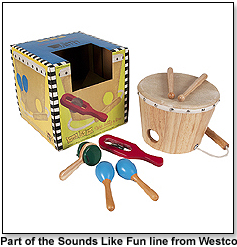 Preschool"The first five years is the time when the most rapid physical, emotional and mental growth takes place," according to Dr. Toy.According to the National Association for the Education of Young Children (NAEYC), toys that encourage this growth include "Things for solving problems—puzzles (with 12 to 20+ pieces), blocks that snap together..." Putting together a puzzle can help children start to build their spacial recognition skills and fine motor skills. Puzzle pieces can also be used to build upon counting and color identification skills. Springbok Kids, from SPRINGBOK PUZZLES, are puzzles designed with young children of varying skill levels in mind. Each puzzle even comes with an educational handbook for parents, so they can make sure their little ones are getting the most out of their puzzle. Cubebot® from AREAWARE is another product that can help kids start to develop their spatial and physical skills. A wooden "robot" figure comprised entirely of cubes, the Cubebot allows kids to move around its "body parts," creating new shapes and configurations. Once they are done, it's just as fun to try and put the Cubebot back the way it came. 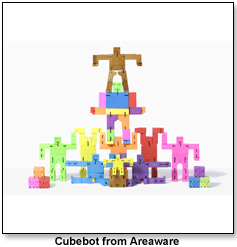 Luckily, CTA DIGITAL has a solution with the Kids Drawing Easel for iPad. This protective case holds the iPad like a traditional easel would hold paper, and kids can bring up an art App and draw and design to their hearts content - and frazzled parents don't have to worry about the clean up. ElementaryAs children get older, they begin to explore the world around them more broadly.For children in the primary grades, Dr. Toy says ideal toys will "enhance reading, writing, math, science, or geography. They stimulate mental abilities, challenge thinking, and help them problem-solve." The staff of Family Education recommends that children of this age also use toys that help them "Develop special interests, skills, and hobbies." Educational toys can be fun, and helping children grow in these areas can be a great bonding experience for the family. MOVA Globes by MOVA are globes that rotate using only the energy of room light and the forces of Earth's magnetic field. Parent and child can explore Earth together, asking each other questions like "Where are we on the map? If you could travel anywhere, where would you go?," or delve into the science behind the globes' rotation. MOVA also offers constellation and planetary globes to help deepen the breadth of knowledge and get kids really passionate about science and astronomy. Another unique toy that helps kids develop an interest in the world around them is Zeenie Dollz. Zeenie Dollz are quirky fashion dolls with a message. Each doll focuses on an environmental issue, and playing with the dolls gives parents an opportunity to introduce eco-friendly practices and important environmental causes to their children, including: recycling, volunteering at animal shelters, learning more about the rainforest and making green practices a part of daily life. 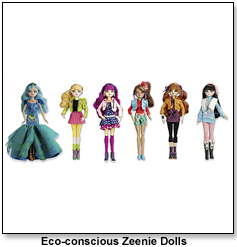 With the help of the products above, you can guide your customers toward products that will enhance shared playtime between parent and child, encouraging mutual personal development and familial bonding. If you see a product you are interested in below, click on the company name to get their contact information and additional product/ordering information. See the Toys:
 Writer's Bio: Justina Huddleston graduated Magna Cum Laude from Emerson College with a BA in Writing, Literature, and Publishing in 2009. After graduating she was the on-site director of the Boston Children's Museum gift store for a year, selling educational, developmental, and creative activity toys that tied in with the museum's exhibits. Justina also interned at children's book publisher Candlewick Press before moving from Boston to Los Angeles, where she is now Editorial Director of TDmonthly Magazine. Read more articles by this author Writer's Bio: Justina Huddleston graduated Magna Cum Laude from Emerson College with a BA in Writing, Literature, and Publishing in 2009. After graduating she was the on-site director of the Boston Children's Museum gift store for a year, selling educational, developmental, and creative activity toys that tied in with the museum's exhibits. Justina also interned at children's book publisher Candlewick Press before moving from Boston to Los Angeles, where she is now Editorial Director of TDmonthly Magazine. Read more articles by this author |
| |||||||||||||||||||||||||||||||||||||||||||||||||||||||||||||||||||||||||||||
Disclaimer Privacy Policy Career Opportunities
Use of this site constitutes acceptance of our Terms of Use.
© Copyright 2026 PlayZak®, a division of ToyDirectory.com®, Inc.

